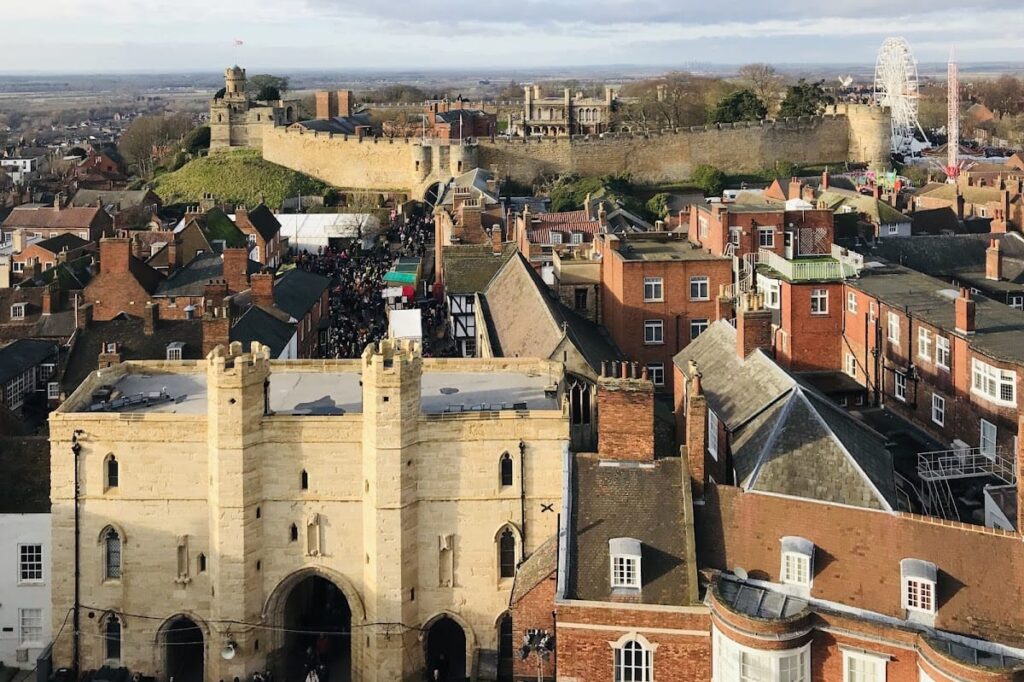Lincoln Castle: A Historic Norman Fortress in England
Visitor Information
Google Rating: 4.6
Popularity: High
Google Maps: View on Google Maps
Official Website: www.lincolncastle.com
Country: United Kingdom
Civilization: Medieval European
Remains: Military
History
Lincoln Castle stands on Castle Hill in Lincoln, England, occupying a site with a long history of military use. Before the castle’s construction, the location hosted a Roman fortress known as Lindum Colonia and possibly an earlier Saxon fortification. This strategic position was chosen by William the Conqueror, who ordered the castle’s foundation in 1068 to secure Norman control after the conquest of England.
During the 12th and 13th centuries, Lincoln Castle played a key military role. It was the site of the First Battle of Lincoln in 1141, where King Stephen was captured, and the Second Battle of Lincoln in 1217, fought during the First Barons’ War. The castle was linked to notable figures such as Ranulf de Gernon, Earl of Chester, who is believed to have constructed the Lucy Tower, named after his mother, Lucy of Bolingbroke.
Ownership of the castle passed through several noble families, including the Earls of Chester and the Earls and later Dukes of Lancaster. In 1399, the castle returned to royal possession under Henry IV and remained Crown property until 1832. At that time, it was sold to local magistrates, marking a shift from royal to civic control.
From medieval times until 1878, the castle served as a prison. Executions were carried out on its walls until 1868. The prison included a chapel designed to enforce the separate system of confinement, isolating prisoners during worship. Archaeological work in the 21st century uncovered remains of a late Saxon church dating to around 900 AD and burials that may include the 8th-century Saxon king Blaccca of Lindsey.
Lincoln Castle also holds one of the four surviving original copies of the Magna Carta from 1215. This document has been displayed internationally, underscoring the castle’s historical importance. Between 2012 and 2015, a major restoration project called “Lincoln Castle Revealed” restored walls, towers, and prison buildings, and created exhibition spaces for the Magna Carta and the Forest Charter.
Remains
Lincoln Castle is enclosed by a stone curtain wall built before 1115, surrounded by a dry moat on all sides except the south. The southern side features two earthen mounds, or mottes, a rare design shared only with Lewes Castle in England. The larger southwest motte supports the polygonal Lucy Tower, originally two stories tall but now partially ruined with less than half its height remaining. The southeast motte holds the square Observatory Tower, dating from the 14th century and topped by a Victorian turret.
Additional defensive structures include the horseshoe-shaped Cobb Hall, which protects the northeast corner, and a Norman gatehouse tower over the West Gate, also known as the Sally Port. The East Gate features a 14th-century arch flanked by gate towers and the remains of a barbican, a fortified outpost or gateway. The castle’s walls are made of roughly hewn stone bonded with strong mortar, incorporating reused Roman walls and gates. The Roman west gate was excavated in the 19th century but was reburied due to deterioration.
Inside the castle are two prison blocks: an 18th-century T-shaped building and a mid-19th-century prison that includes a small female wing. A courthouse built in the 1820s remains in use today as Lincoln Crown Court. The prison chapel is notable for its design, featuring enclosed individual seating to enforce prisoner isolation during worship, reflecting the separate system of incarceration.
Other features on the site include remnants of Lincoln’s Eleanor cross, an oriel window relocated from Sutton Hall incorporated into the main gate, and a bust of King George III taken from the Dunston Pillar. The castle’s defensive earthworks once extended beyond the walls, including medieval earth banks to the west and the now-demolished Thorngate Castle near the river, which formed part of the city’s defenses.










